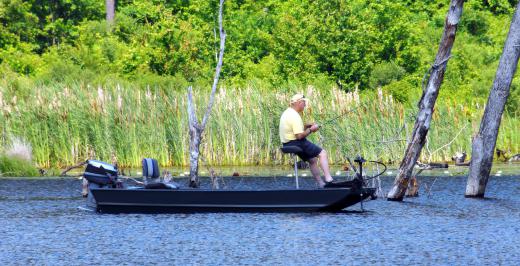Fishing lines, it may be said, are the most important thing between the angler and the fish. While the hooks, rods and reels all have their own unique role, the lines keep everything together. However, choosing the right fishing line can sometimes be difficult, depending on the situation. Many anglers fail to take this into consideration as they head out to the water and some may lose fish because of that failure to do so.
There are three basic types of fishing lines: monofilament, braided and fluorocarbon lines. All have their place. When choosing a line, it is also good to look at more than just the composition of the line but also how thick it is and what it is rated for. In the end, when choosing a line, cost should not be the only factor. While all lines make look the same, there are subtleties that make some slightly better than others. This can mean the difference between a successful day on the water and coming home empty handed.
By far, monofilament line is the most popular type. It was invented by the DuPont company in the 1930s and basically is a plastic line, usually made of nylon. It is made by pouring melted plastic into a tube, which shapes the line.

Before monofilament became the product of choice, braided fishing line was the preferred line for many anglers. Usually made from Dacron, this type of line may have been the best choice for the time, but it had a number of problems. It did not hold a knot very well and was susceptible to abrasions. Some new forms of braided lines have since come on the market, looking to overcome some of the shortcomings of the original versions. However, total market share still lags substantially behind monofilament. These newer versions are often called microfilament.
The fluorocarbon line was first developed in Japan and has since gained in popularity in other parts of the globe, including the United States, primarily as a salt water fishing line and a fly fishing line. Its advantages are its near invisibility in water. Also, due to the fact fluorocarbon lines do not absorb water, it will not stretch out or weaken like many monofilament lines do over time. When fishing in areas with rocks, submerged logs and other such impediments, fluorocarbon fishing lines are a good choice because they resist abrasion very well.
